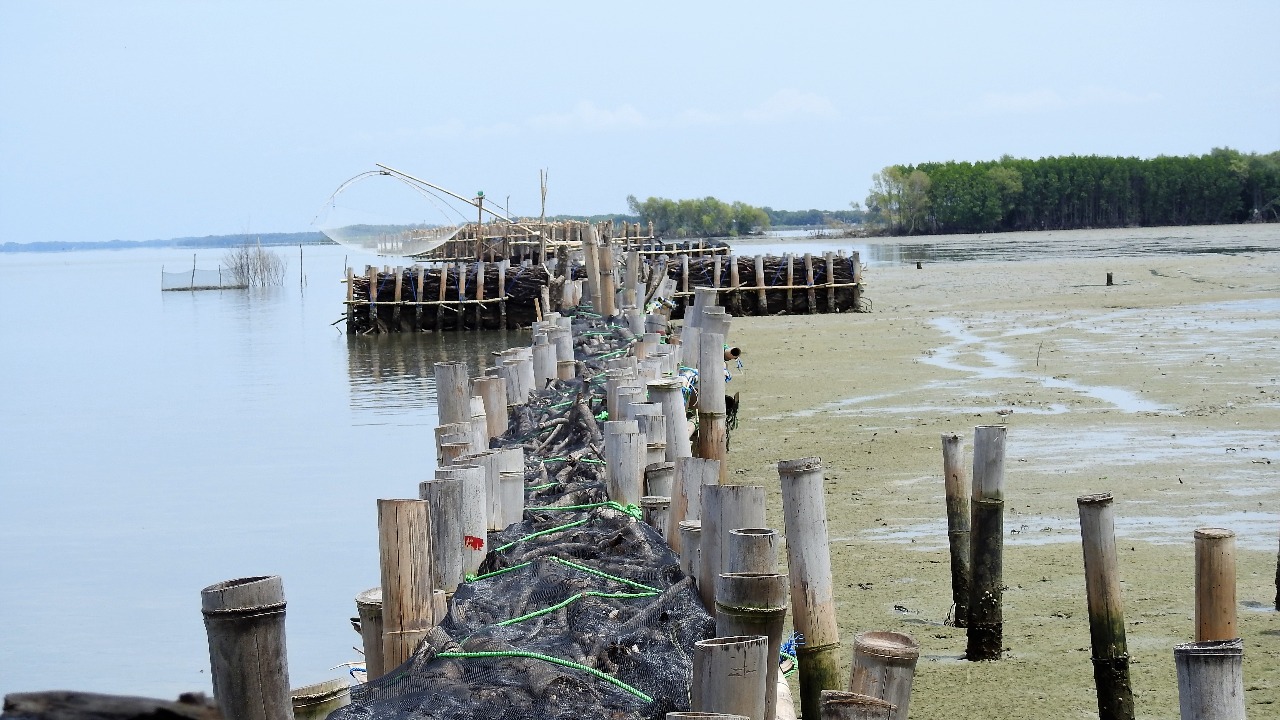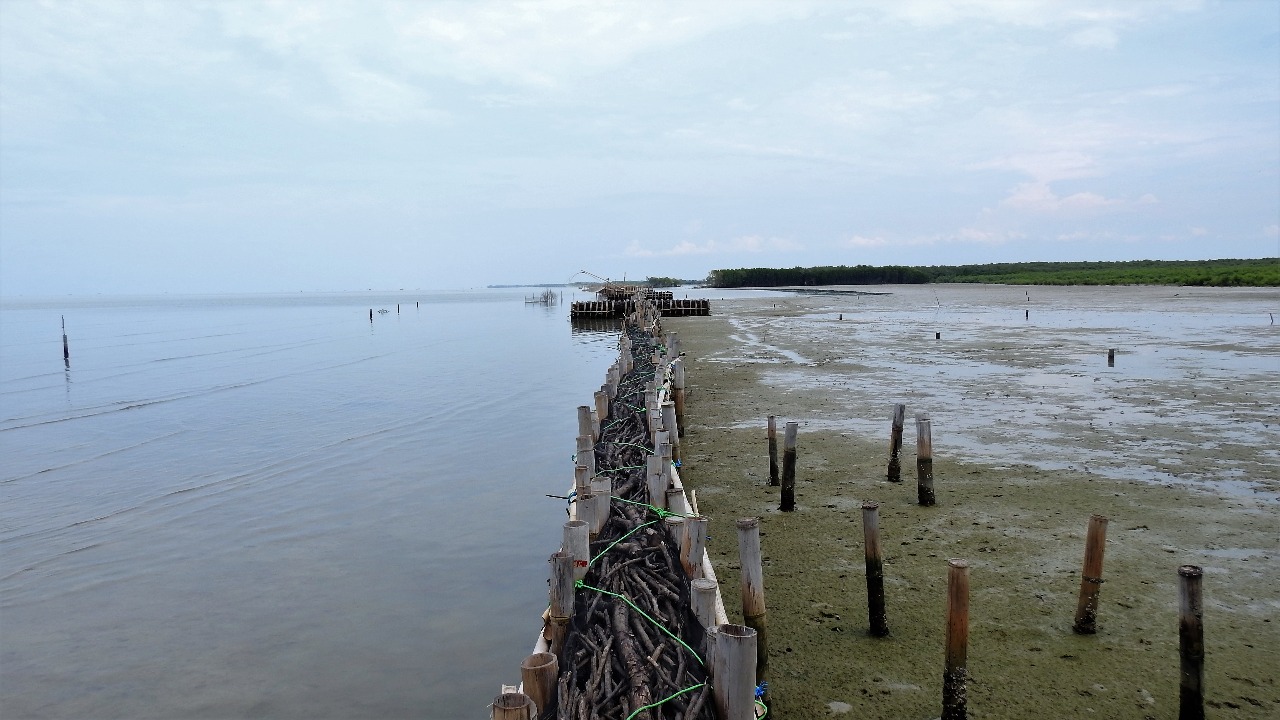How to apply ICZM in Central Java
A brief explanation of why ICZM is needed in Central Java.
- Technical Aspects
- Working Together
- Financing
- Building a strong organization
- Learning and personal development
Contents
Technical Aspects
Physical Relationships
The coastal zone is an interface between land and sea. The Coastal zone boundaries can be defined differently in each country/area due to regulation, political issue and, interest. In Indonesia, the coastal zone is stipulated in UU No 27 Year 2007, whose transition between terrestrial and marine ecosystems are highly affected by the dynamics between land and sea (up to 12 miles from the coastline).
This zone is constantly changing due to the dynamic interaction between the land and sea. Land-based activities along the watersheds have proven to have impacts on the sea. Upstream deforestation will decrease water discharge and result in sedimentation in the river body and sediment will not deposit to the sea. In the midstream, pollutants from industries and sewage treatment plants have poisoned aquatic biota, including aquaculture that is the source of livelihood of the local community. Activities such as canalization and sand river mining led to decreased sedimentation downstream. In the midstream where industry, canalization, sand river, mining, tourism, and settlements occur produce both solid and water waste causing sea pollution. These are worsened by the conversion of mangrove forests into fishponds in the downstream leading to the loss of natural protection from waves and erosion.
Similarly, the dynamic processes in the sea such as storms, waves, and currents will affect the intertidal area and land. Waves coming inland, instead of being attenuated by mangroves that are the natural barriers, directly hit the coastlines leading to coastal erosion. In the long run, this will cause coastline retreat that will destroy not only human settlements but also fishponds along the coastlines that are the livelihood of the local community.
This shows the inter-connectedness between processes in land and sea. Thus, a thorough comprehension of such interactions is essential in planning for coastal zone management.
Solutions (hard and soft)
There is no “one size fits all” solution to address coastal problems. The problem for each area is context-specific depending on the system and root causes of the problems. An intensive and integrated analysis of the problem and the system of the area is needed to determine the best solution. The Solution can be formed in two types; non-structural and structural measures.
The non-structural measure is defined as a measure not involving physical construction that uses knowledge, practice or agreement to reduce risks and impacts (UNISDR 2009: 28). Non-structural measures can be formed in particular through policies and laws, public awareness-raising, vulnerability map, Emergency plan map, training, and education.”. The structural measure can be classified in hard and soft structures according to how its constructed and used. Application of hard structure can be easily found in many areas in Indonesia as follows:
- Groins
- Breakwater
- dike (APO)
- Retaining wall.
These structures are highly visible man-made used to stop or disrupt natural processes. These structures are costly, short-term solutions and often they can have a negative impact on the environment. Installing hard engineering structures in one coastal location can have detrimental effects further down the coast. On the other hand, soft structure is trying to protect the coast rather than trying to stop natural processes. It uses ecological principles and practices, therefore making less of a negative impact on the natural environment. Soft engineering is less expensive to implement but sometimes has a high cost in maintenance, and creates more long-term, sustainable solutions than hard engineering projects. Following are an example of a soft engineer:
- Permeable structure
- Sand nourishment
- Geotube
- Vegetation/mangrove
Permeable structures have been implemented in Demak, Central Java as part of Building with nature Pilot Project since 2015.
Ministry of Marine and Fisheries who was also part of the Building with Nature consortium expanded the implementation of the permeable structures to Gresik, East Java.
Other examples of building with nature measures can be seen here.
It is important to have a sustainable measure, which can be harmonized with the natural environment to enhance the ecological, economics and society.
Working Together
Within Your Organization
With Stakeholders
A project or program never stands alone. You always have to deal with the interests of users, customers, employees, local residents or other stakeholders. Stakeholder management helps you make complex projects or programs run smoothly. You resolve or prevent conflicts in a structured way with the environment. And how you build sustainable relationships. This way you work in a more result-oriented way, even if the interests are far apart.
Communication and awareness
Financing
Financial Flows
Making a Business Case
When working on ICZM it is extremely important to make a good business case. As the authority where you have to apply for money will have to be convinced to give financial support to the proposed project. The video below shows you how to make a good business case.
In this video, they speak about a company and customers, but you might replace the words with governmental organization and stakeholders (such as the local communities).
Building a strong organization
Leadership (incl some notes on politics)
Good leadership is essential for good results. Ultimately, it is the leaders in your organization - formal and informal - who lead changes in the right direction. Cashing in on new opportunities. Implementing innovations and inspiring their colleagues. Good leaders link personal ambitions to the assignment (in this case sustainable coastal development) that your organization stands for. Leading yourself, your team and the joint assignment.
Integration and Mandate
To really make ICZM work on the long term organization structures that make this possible have to be put in place. All organizations that have authority on a subject within the coastal zone should be connected to each other to make integrated decisions. This can, for example, be done in a Steering Committee that meets every few months. In the steering committee, all different levels and sectors have to be represented. Among others, it can include the municipal level, the province level, government officials from the industry, forestry and water departments.
Alliance for Water Stewardship
The International Water Stewardship Standard (AWS Standard) might help to implement Integrated Coastal Zone Management. It is a globally applicable framework for major water users (including companies in the coastal zone) to understand their water use and impacts, and to work collaboratively and transparently for sustainable water management within a catchment context. The Standard is intended to drive social, environmental and economic benefits at the scale of a catchment.
It achieves this by engaging water-using sites in understanding and addressing shared catchment water challenges as well as site water risks and opportunities. It asks water-using sites to address these challenges in a way that progressively moves them to best practice in terms of five outcomes: good water governance, sustainable water balance, good water quality status, important water-related areas, safe water sanitation and hygiene for all. Find out more.
Learning and personal development
Learning is important for all other ICZM topics. It is important to ensure the updating of knowledge and skills within the organization and to anchor what is learned. You can gain updated knowledge from various sources. It is wise to once in a while train the staff so they understand the latest developments and have the needed knowledge and skills. Universities can provide training ad information (in Central Java this is UNDIP) and knowledge can be hired. UNDIP will also be involved to see how they can facilitate Central Java Province with training and knowledge.
PDCA (plan–do–check–act or plan–do–check–adjust)
Read more about this four-step management method here.


